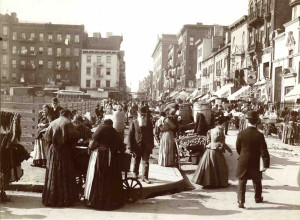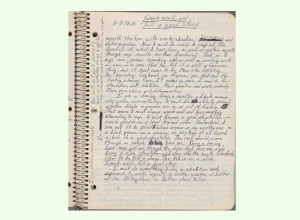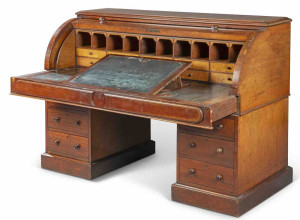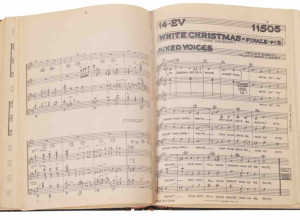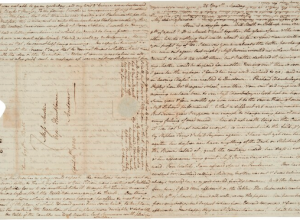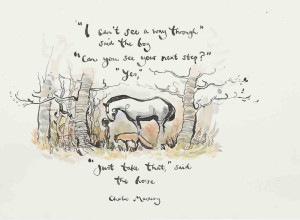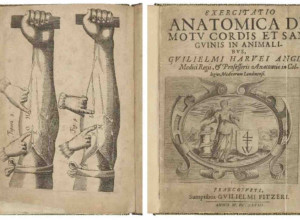The Lost Story of the Aries Press: An Interview with Bruce Austin
 In the 1920s, Spencer Kellog Jr. operated the small but influential Aries Press in Eden, New York. The press attracted acclaim for producing books to a high artistic value and its publications were praised as much for ther aesthetics as their contents. The full story of the Aries Press has been told for the first time in a new publication from RIT Press, entitled "The Aries Press of Eden, New York." The book was written by Richard Kegler, Director of the Wells College Book Arts Center and a letterpress printer with a long-standing interest in printing history. Copies are available for $49.95 online from the RIT press.
In the 1920s, Spencer Kellog Jr. operated the small but influential Aries Press in Eden, New York. The press attracted acclaim for producing books to a high artistic value and its publications were praised as much for ther aesthetics as their contents. The full story of the Aries Press has been told for the first time in a new publication from RIT Press, entitled "The Aries Press of Eden, New York." The book was written by Richard Kegler, Director of the Wells College Book Arts Center and a letterpress printer with a long-standing interest in printing history. Copies are available for $49.95 online from the RIT press.
We recently interviewed Bruce Austin, Director of the RIT Press, about the new publication over email. Austin is also an antiques dealer and an expert in the American Arts & Crafts Movement in Western New York.
Please introduce our readers to The Aries Press:
The Aries Press was a small, private press that operated from Eden, New York, a village that's south of Buffalo in Erie County. Founded by Spencer Kellogg Jr., the son of an linseed oil merchant, the Press won immediate acclaim for its very first book: THE GHOST SHIP earned inclusion in the American Institute of Graphic Arts prestigious "Fifty Books Award of 1926." Though it operated only briefly, 1925-1928, Aries' influence was profound. Renowned type designer Frederic Goudy created a special font, printing of Aries' work was done on the famous William Morris Kelmscott Albion Press, its compositors were were former Roycroft (East Aurora, NY) print shop employees and brothers, Emil Georg and Axel Sahlin, and illustrations for the Press were created by such artists as Rockwell Kent and J.J. Lankes.
Spencer Kellog Jr, who founded The Aries Press, sounds like an interesting figure. Fill us in with his quick biography:
The wealthy son of the largest linseed milling center in the United States, Spencer Kellogg Jr.'s interests were more focused on matters of art than manufacturing. His education included Harvard University, the Art Students League (New York City) and the Buffalo School of Fine Arts. He operated the Aries Book Shop beginning in 1921, and was an active and visible presence in the Buffalo art world. Kellogg served as director of the Buffalo Fine Arts Academy, today known as the Albright-Knox Art Gallery. In his foreword to THE ARIES PRESS OF EDEN, NEW YORK, Anthony Bannon (director of the Burchfield-Penney Art Center) wrote of Kellogg's magnetic personality: "Wherever he went, people of like minds gathered. That he made art, one way or another, and through it created platforms for discourse is worthy of our attention." A quirky character, Kellogg was a writer, photographer, patron of the arts and active proponent for the Buffalo Photo-Pictorialists.
How many books did The Aries Press produce in its existence?
Three or four, depending upon how generously one wishes to interpret "book". Evelyn M. Watson's NIAGARA (1925) is an 8 page title, 6" x 9". The Award-winning title by Robert Middleton, THE GHOST SHIP (see above), runs 20 pages. Kellogg's own THE OAK BY THE WATERS OF ROWAN (1927) is 28 pages. And the 1928 volume, VERSES by Gertrude Kellogg Clark runs 37 pages. BUT . . . Aries produced quite a few booklets and keepsakes, objects that today we'd call commissioned works for limited distribution.
Because of its limited lifespan and short runs, virtually any Aries product is collectable. While the story told in THE ARIES PRESS OF EDEN, NEW YORK is an interesting and engaging one, collectors will find the bibliography especially valuable as full details for each publication are presented (including, e.g., type, binding, paper, number of copies printed, etc.).
What caused the Press to cease operation?
The received history isn't entirely definitive on this point. However, it's safe to say that Mr. Kellogg's changing art interests, where and to whom he wanted to express his patronage and the Depression probably all combined to lead to the Aries Press's demise. Kellogg's compositors, the Sahlin brothers, were quite clear on this point: they needed paying work and, at Aries, there just wasn't enough of it.
What is the Press' legacy today?
The Aries Press is an important chapter in the 20th century history of the private press movement and that informs and influences the art of fine printing and bookmaking. Its professional and artistic connections are deeply embedded in Western New York heritage and its contributions have global reach.
[Copies of The Aries Press are available for purchase from the RIT Press website]
[Images from RIT Press]







